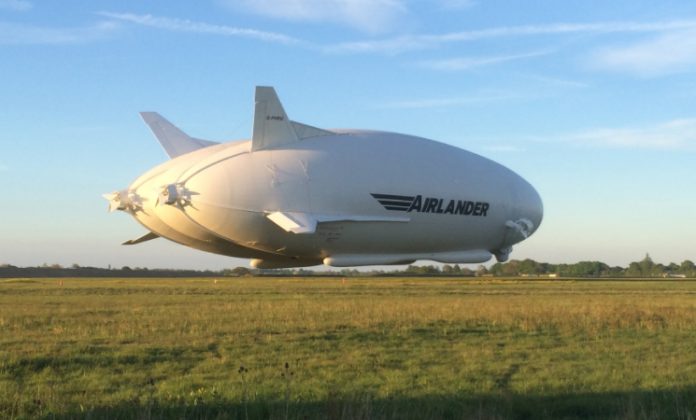The world’s largest aircraft has returned to the sky with a successful test flight, after it crashed last year.
Airlander 10 completed a three-hour test flight overnight, Australian time, which achieved its objectives of landing safely, exploring handling characteristics, and collecting performance data. The aircraft flew from its base at the giant Cardington airship sheds, north of London, which were used to build airships in the 1920s.
The Airlander 10 is a hybrid airship, which uses both aerostatic (lighter than air) and aerodynamic (wing or shape based) lift. Its developer says this type of aircraft provides ‘an ultra-stable, ultra-powerful and ultra-long endurance platform’. It sees the Airlander 10 being used for search and rescue, border control, coast guarding, crowd monitoring, security, filming and academic research. The aircraft was originally developed by the US Army and was bought by a British subcontractor after the project was cancelled.
The aircraft’s third flight was marred by a crash on landing that destroyed the flight deck, although no-one was hurt. The British Air Accident’s Investigation Branch found the crash was the result of a mooring line that was hanging down after the first landing attempt. The crew believed the line to be 50 feet (15 metres) long when it was 155 feet (47metres) long, and snagged powerlines on the second landing attempt. Among the changes made since the crash is a set of inflatable bags on the hull bottom to cushion hard landings.
The Airlander 10 weighs 20 tonnes, with a 1 tonne net weight when landed, can carry 10 tonnes, and has a ceiling of 20,000 feet. Its top speed is given as 80 knots.


